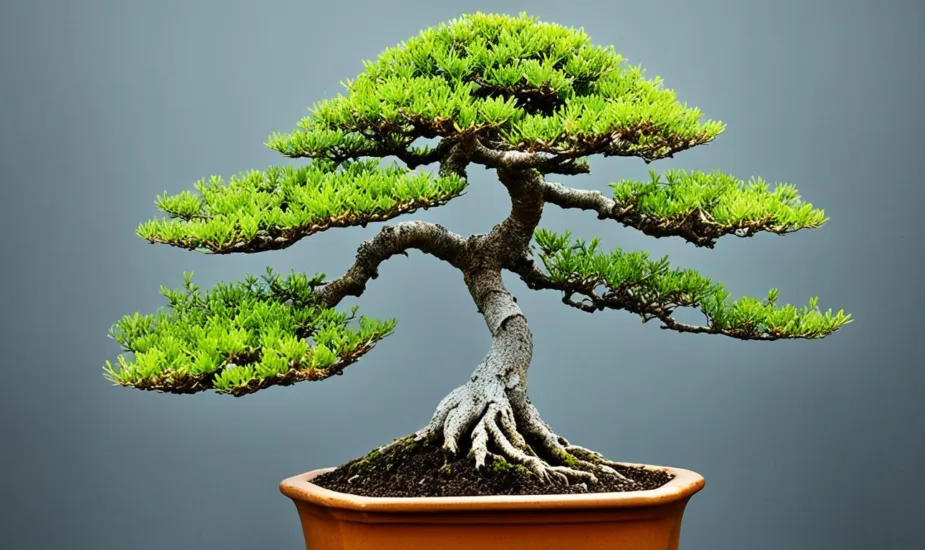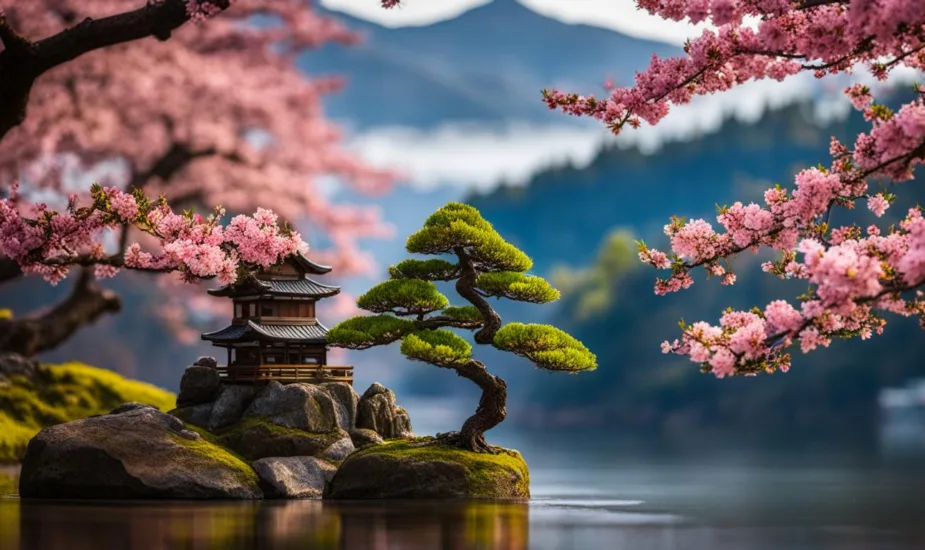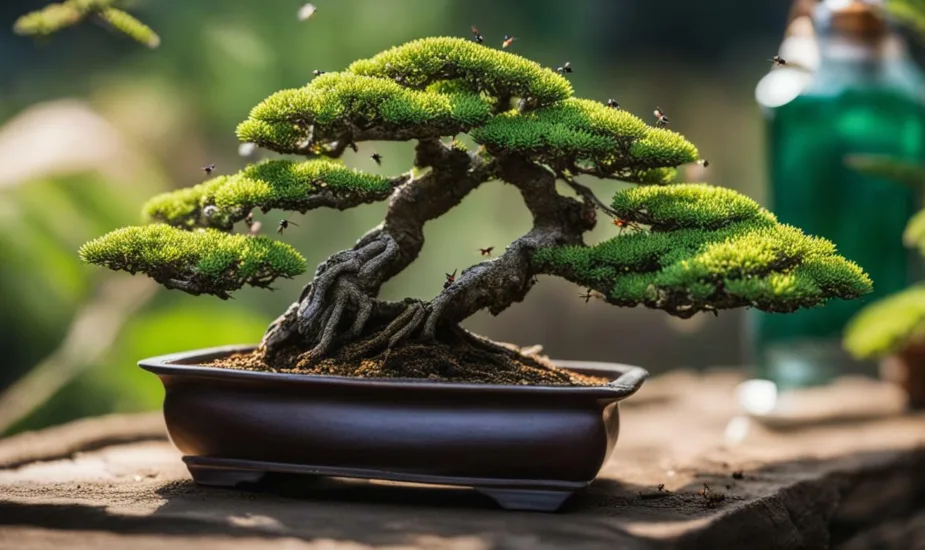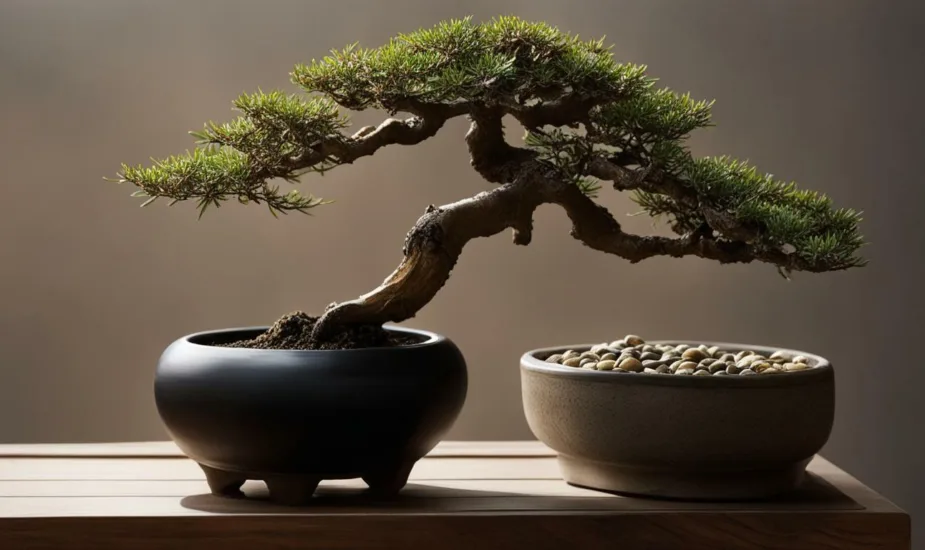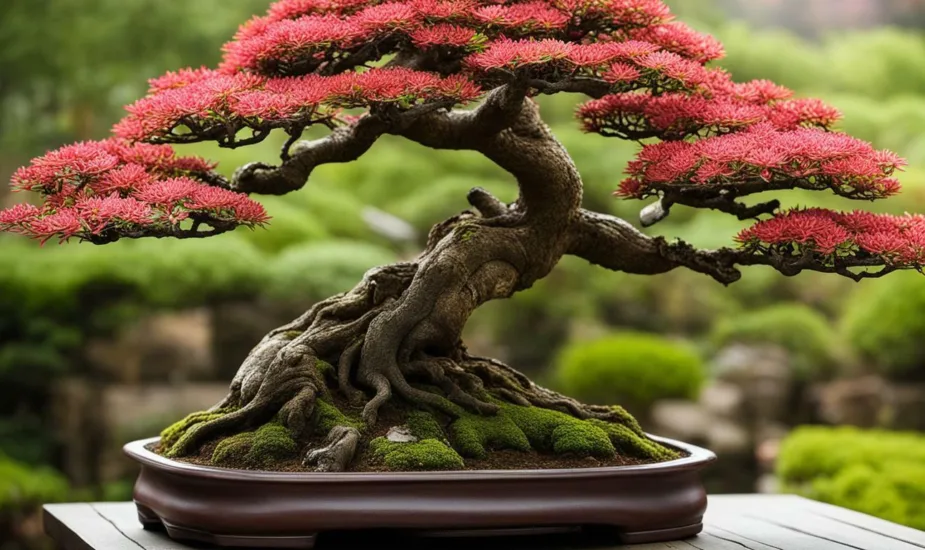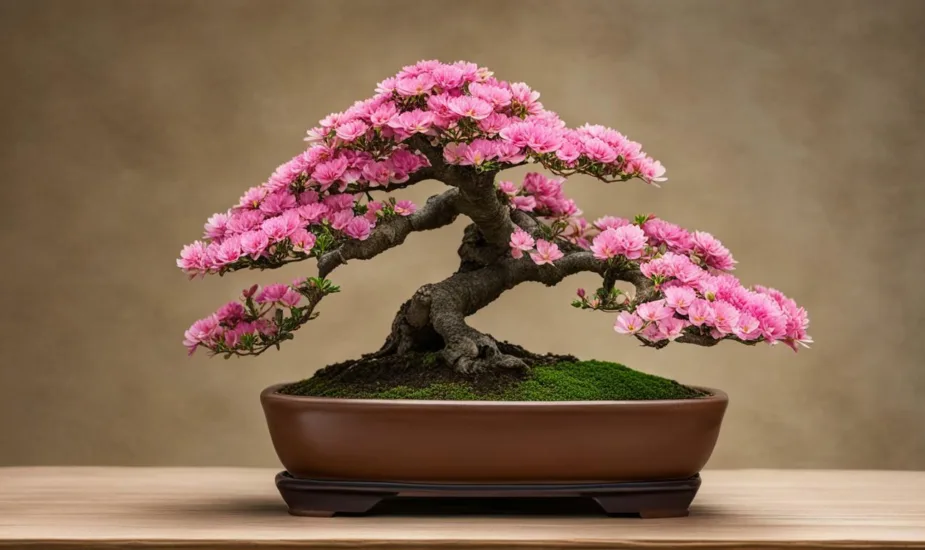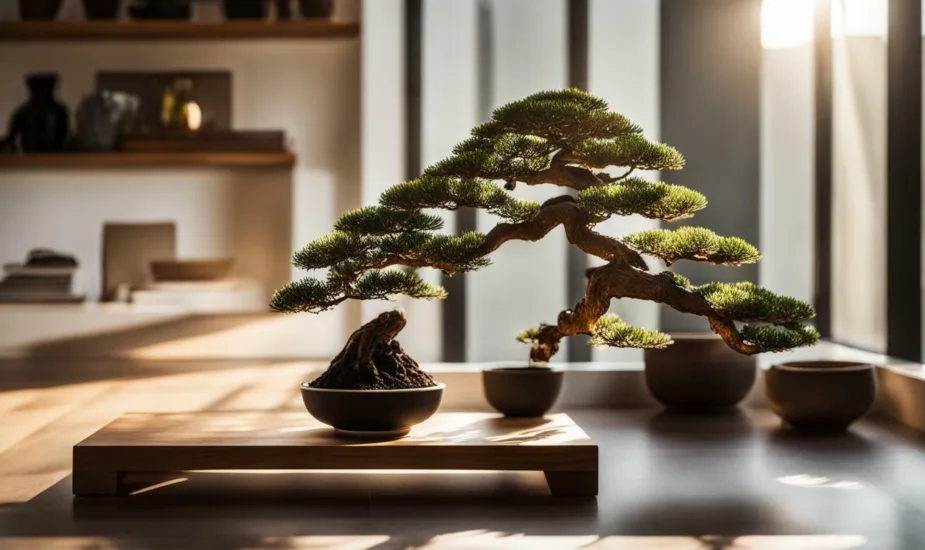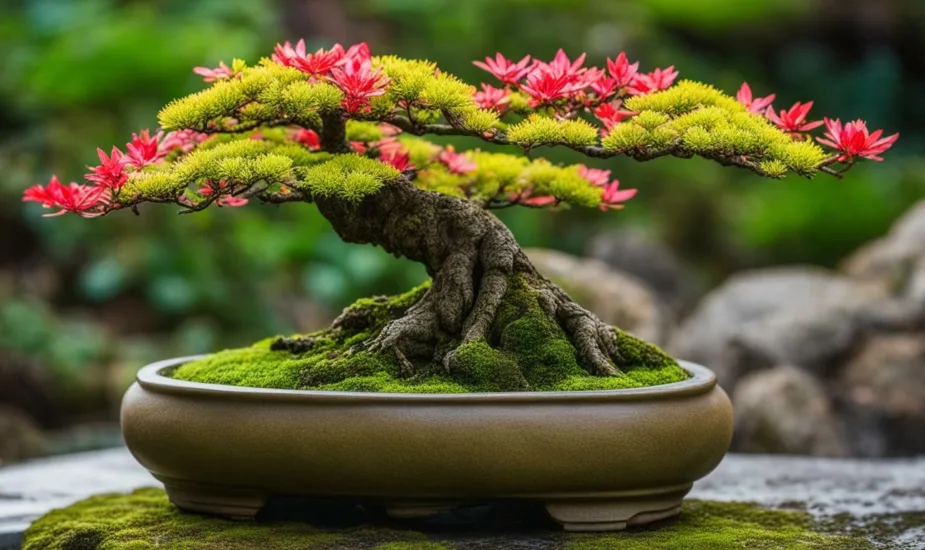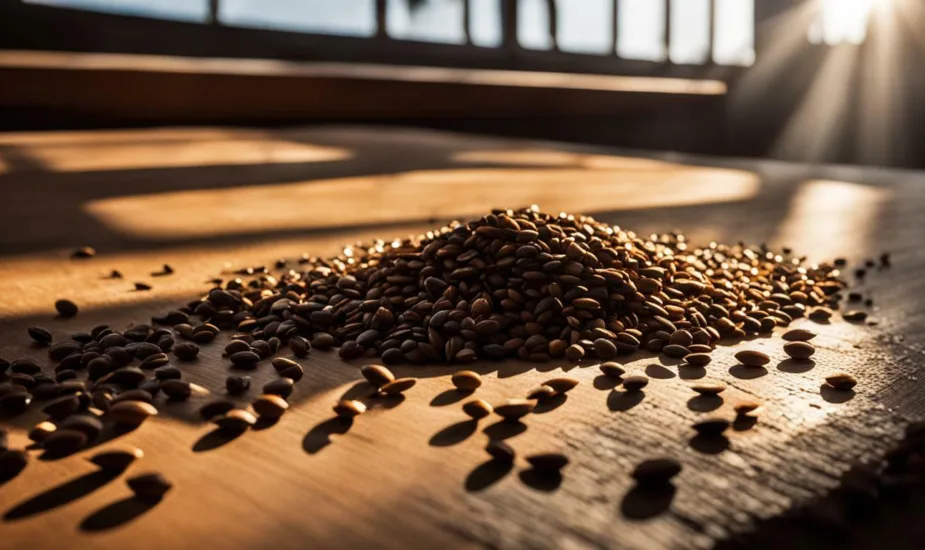Can You Grow Bonsai Trees Hydroponically? Explore the Possibilities!
Thinking about growing bonsai trees hydroponically? Discover the possibilities and learn about the care involved in this unique cultivation method.

Hydroponic bonsai is a new style of growing bonsai using mineral nutrient solutions in water, without soil. The roots of the tree are suspended in a nutrient solution or mist, providing greater control over nutrient intake. Some bonsai species that can be grown hydroponically include ficus, crassula, carmona, ginkgo, maple, and wax bonsai.
Hydroponic systems like deep water culture and ebb and flow are popular choices for growing bonsai, while aqua bonsai involves placing the bonsai tree in a glass of water mixed with nutrients for a visually appealing display.
However, traditional bonsai cultivation using well-draining soil mixture is generally recommended for beginners as it provides a more straightforward and reliable method. Bonsai trees should be re-potted every 2-3 years in a pot proportional to the tree’s size.
It is important to provide appropriate conditions for bonsai trees, including high humidity, proper lighting with LED grow lights, and maintaining optimum temperature. Bonsai trees require a nutrient solution, which should be carefully monitored and not overwatered to avoid root rot.
While bonsai trees can technically survive in just water, it is not recommended for long-term growth as they require the same conditions as normal trees, including soil, sunlight, and a well-draining environment.
It is essential to research and understand the specific care requirements of each bonsai tree species before starting. With the right care, bonsai trees can be kept alive and healthy, but they do require specific attention and maintenance.
What is Hydroponic Bonsai and How Does it Work?
Hydroponic bonsai is a modern approach to growing bonsai trees that utilizes mineral nutrient solutions and water in place of soil, offering unique advantages for tree development. In this innovative technique, the roots of the bonsai tree are suspended in a nutrient solution or mist, allowing for precise control over the tree’s nutrient intake. By eliminating the need for soil, hydroponic bonsai offers several benefits, including faster growth rates, improved nutrient uptake, and reduced risk of pests and diseases.
Hydroponic bonsai employs various techniques and systems to provide optimal conditions for tree growth. Deep water culture is a popular method, where the bonsai tree is placed in a container of water with a nutrient-rich solution, allowing the roots to absorb nutrients directly. Another technique is ebb and flow, where the tree’s roots are periodically flooded with nutrient solution and then drained. Additionally, aqua bonsai involves placing the bonsai tree in a glass of water mixed with nutrients, which not only provides nourishment but also creates a visually striking display.
However, it is important to note that hydroponic bonsai may not be the ideal choice for beginners, as traditional soil-based cultivation tends to be more straightforward and reliable. Soil-based bonsai provides a stable medium for root development and offers a more forgiving environment for novice growers. Nevertheless, for experienced bonsai enthusiasts looking to explore new methods and push the boundaries of bonsai cultivation, hydroponic techniques can offer exciting possibilities.

Various hydroponic techniques can be utilized for bonsai cultivation, each with its own advantages and considerations. Some popular methods include:
- Deep Water Culture: Involves suspending the bonsai tree’s roots in a nutrient-rich water solution for continuous nourishment.
- Ebb and Flow: Utilizes periodic flooding and draining of the bonsai’s roots with nutrient solution to ensure adequate hydration.
- Aqua Bonsai: Creates a visually appealing display by placing the bonsai tree in a glass of water mixed with nutrients.
These techniques enable bonsai trees to thrive without conventional soil-based media, offering greater control over nutrient intake and fostering accelerated growth.
Benefits of Hydroponic Bonsai Growth
Hydroponic bonsai growth offers several advantages over traditional soil-based methods. Some key benefits include:
- Rapid Growth: Bonsai trees grown hydroponically tend to develop at a faster rate due to the controlled nutrient-rich environment.
- Enhanced Nutrient Absorption: Without the presence of soil, the bonsai tree’s roots can absorb nutrients more efficiently, leading to better overall health and vitality.
- Pest and Disease Control: Hydroponic systems minimize the risk of pests and diseases that often occur in soil-based cultivation, promoting a healthier bonsai tree.
- Sustainable Cultivation: Hydroponic bonsai requires less water compared to traditional methods, making it a more environmentally friendly choice.
By leveraging these benefits, hydroponic bonsai presents a captivating and innovative approach to cultivating bonsai trees, enabling enthusiasts to explore new possibilities and achieve stunning results.
| Deep Water Culture | Ebb and Flow | Aqua Bonsai |
|---|---|---|
| Allows roots to absorb nutrients directly from a water solution | Provides periodic flooding and draining of the roots for hydration and nutrient absorption | Creates a visually striking display by placing the tree in a glass of water mixed with nutrients |
| Fast growth rate | Controlled nutrient intake | Reduced risk of pests and diseases |
| Requires careful monitoring of water levels and nutrient balance | Requires proper timing and irrigation systems | Needs regular water changes and monitoring |
Best Practices for Hydroponic Bonsai Cultivation
To achieve optimal growth and health for your hydroponic bonsai trees, follow these best practices and learn how to set up a hydroponic system that suits your needs.
1. Choosing the right nutrient solution: Nutrient solutions are crucial for the development of your bonsai trees. They provide essential minerals and elements necessary for healthy growth. It’s important to select a balanced and high-quality nutrient solution specifically formulated for hydroponic bonsai cultivation. Different bonsai species may have varying nutrient requirements, so it’s advisable to research and tailor your nutrient solution accordingly.
2. Setting up a hydroponic system: There are different types of hydroponic systems available, each with its own advantages and disadvantages. Research and choose a hydroponic system that suits your space, resources, and level of expertise. Deep water culture and ebb and flow systems are popular choices for hydroponic bonsai cultivation. Ensure proper water circulation and oxygenation to avoid the risk of root rot and other issues.
3. Container options: Selecting the right container for your hydroponic bonsai is crucial. Opt for a container that allows for proper drainage and aeration, such as a specialized hydroponic bonsai pot or container. Avoid containers with limited drainage as excessive water retention can lead to root rot and other problems. Additionally, consider the size of the container in relation to the size of your bonsai tree to ensure sufficient space for root growth.
Hydroponic Bonsai Nutrient Solution Examples:
| Nutrient Solution Type | Elements Included | Suggested Bonsai Species |
|---|---|---|
| General Purpose | Nitrogen, Phosphorus, Potassium, Calcium, Magnesium, Trace Elements | Ficus, Carmona, Maple |
| Blooming Formula | Phosphorus, Potassium, Calcium, Magnesium, Trace Elements | Crassula, Ginkgo |
| Specialized Formula | Specific to Bonsai Species | Species-Specific |
Remember to regularly monitor and adjust your nutrient solution according to your bonsai tree’s needs. Nutrient imbalances can lead to stunted growth, nutrient deficiencies, or toxicity. Pay attention to the pH levels of your solution and maintain it within the appropriate range for optimal nutrient uptake.
By following these best practices and understanding the specific care requirements of your bonsai tree species, you can create a thriving hydroponic bonsai system. With the right nutrient solution, appropriate container, and proper maintenance, you’ll be able to enjoy the beauty and artistry of hydroponically grown bonsai trees.
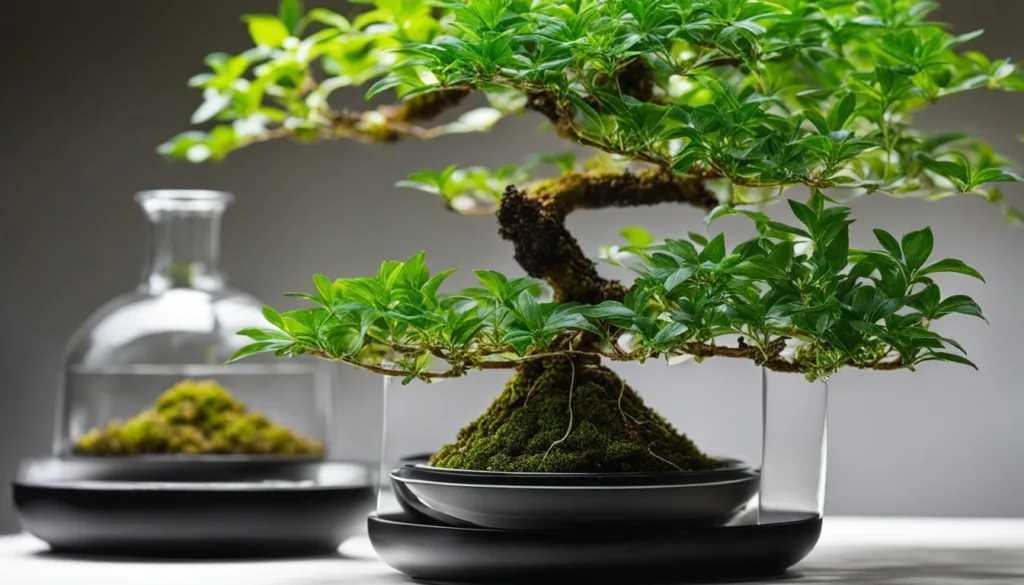
Proper care is crucial to the success of your hydroponic bonsai trees, including providing the right lighting, humidity, and avoiding common issues like root rot. Bonsai trees require specific conditions to thrive and maintain their miniature size and artistic form.
When it comes to lighting, LED grow lights are highly recommended for indoor bonsai cultivation. These lights provide the necessary spectrum and intensity for photosynthesis, ensuring healthy growth and development. Additionally, maintaining the right humidity levels is essential. Using a humidity tray or misting the leaves regularly can help create a humid environment, mimicking the natural habitat of bonsai trees.
One common issue to watch out for is root rot. Overwatering can lead to root rot, which can be detrimental to the health of your hydroponic bonsai. It’s important to monitor the moisture levels in the growing medium and adjust watering accordingly. Allowing the roots to dry out slightly between waterings is generally recommended to prevent waterlogged conditions.
While bonsai trees can technically survive in just water, it is not recommended for long-term growth. Bonsai trees, like their larger counterparts, require a well-draining environment and a suitable soil mixture that provides aeration to the roots. Without soil, bonsai trees may not receive the necessary nutrients and support required for optimal growth. Therefore, using a well-draining soil mix designed specifically for bonsai cultivation is typically recommended.
With the right care and attention, hydroponic bonsai trees can thrive and become stunning artistic creations. Remember to research and understand the specific care requirements of each bonsai tree species before starting your hydroponic bonsai journey. By providing the proper lighting, humidity, and avoiding common issues like root rot, you can create a beautiful and healthy hydroponic bonsai collection.

- Ensure proper lighting with LED grow lights
- Maintain the right humidity levels using trays or misting
- Monitor and adjust watering to avoid root rot
- Use a well-draining soil mixture designed for bonsai trees
- Research the specific care requirements for each bonsai tree species
By following these care tips and providing the ideal conditions, you can enjoy the beauty and uniqueness of hydroponic bonsai trees in your own home or garden.
Bonsai Care Quote:
“Proper care and attention are the keys to successful hydroponic bonsai cultivation. From lighting and humidity to avoiding root rot, every detail matters in creating a thriving bonsai tree.” – Bonsai Enthusiast
By adopting the best practices and incorporating these care tips, you can confidently embark on your hydroponic bonsai journey and enjoy the rewards of nurturing these miniature living artworks.
| Bonsai Care Essentials | Hydroponic Bonsai Tree Care |
|---|---|
| Lighting | LED grow lights for optimal photosynthesis |
| Humidity | Trays or misting to maintain appropriate humidity levels |
| Watering | Monitor and adjust to avoid root rot |
| Soil Mixture | Well-draining soil mix designed for bonsai cultivation |
Conclusion
In conclusion, hydroponic bonsai offers unique techniques for cultivating these miniature trees, providing potential benefits for enthusiasts who are willing to explore this alternative method.
Hydroponic bonsai allows for precise control over the nutrient intake of the tree, promoting optimal growth and health. By suspending the roots in a nutrient solution or mist, bonsai trees can thrive without the need for traditional soil-based cultivation.
Popular hydroponic systems like deep water culture and ebb and flow offer effective ways to grow bonsai trees, while aqua bonsai adds an artistic element to the cultivation process. These methods can create visually stunning bonsai displays.
However, it is important to note that traditional bonsai cultivation using well-draining soil is generally recommended for beginners. It provides a more straightforward and reliable method, allowing beginners to develop their skills and understand the fundamental principles of bonsai care.
Regardless of the cultivation method chosen, proper care and maintenance are essential for the health and longevity of bonsai trees. This includes providing high humidity, ensuring adequate lighting with LED grow lights, and maintaining an optimum temperature. Additionally, monitoring and balancing the nutrient solution is crucial to avoid overwatering and prevent root rot.
While bonsai trees can technically survive in just water, it is not recommended for long-term growth. They require the same conditions as normal trees, including soil, sunlight, and a well-draining environment. Therefore, it is essential to research and understand the specific care requirements of each bonsai tree species before starting.
With the right care and attention, bonsai trees, whether grown hydroponically or in soil, can bring beauty and tranquility to any space. Whether you are a seasoned bonsai enthusiast or a curious beginner, exploring the possibilities of hydroponic bonsai can offer a rewarding and unique experience.
FAQ
Q: Can bonsai trees be grown hydroponically?
A: Yes, bonsai trees can be grown hydroponically using mineral nutrient solutions in water instead of soil.
Q: What species of bonsai trees can be grown hydroponically?
A: Some bonsai species that can be grown hydroponically include ficus, crassula, carmona, ginkgo, maple, and wax bonsai.
Q: What are the popular hydroponic systems for growing bonsai?
A: Popular hydroponic systems for growing bonsai include deep water culture and ebb and flow.
Q: What is aqua bonsai?
A: Aqua bonsai involves placing the bonsai tree in a glass of water mixed with nutrients for a visually appealing display.
Q: Is hydroponic bonsai cultivation recommended for beginners?
A: Traditional bonsai cultivation using well-draining soil mixture is generally recommended for beginners as it provides a more straightforward and reliable method.
Q: How often should bonsai trees be re-potted?
A: Bonsai trees should be re-potted every 2-3 years in a pot proportional to the tree’s size.
Q: What are the essential conditions for bonsai tree care?
A: Bonsai trees require high humidity, proper lighting with LED grow lights, and maintaining an optimum temperature.
Q: How often should bonsai trees be watered?
A: Bonsai trees require a carefully monitored nutrient solution and should not be overwatered to avoid root rot.
Q: Can bonsai trees be grown just in water?
A: While bonsai trees can technically survive in just water, it is not recommended for long-term growth as they require the same conditions as normal trees, including soil, sunlight, and a well-draining environment.
Q: What should I research before starting hydroponic bonsai cultivation?
A: It is important to research and understand the specific care requirements of each bonsai tree species before starting hydroponic bonsai cultivation.
Note: This FAQ section provides answers to some commonly asked questions about growing bonsai trees hydroponically. However, it is recommended to consult further resources and conduct additional research for more detailed information.
 Little Garden Tips
Little Garden Tips




